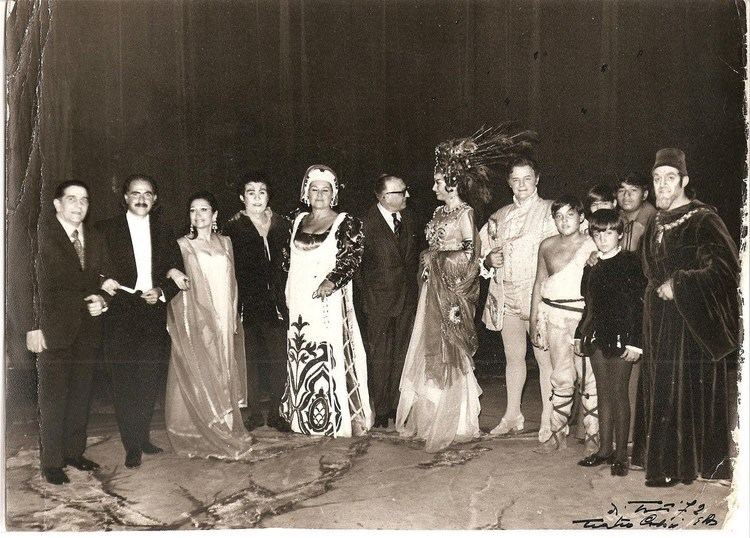First performance 19 May 1967 | Written 1966 Librettist Manuel Mujica Láinez Adapted from Bomarzo | |
 | ||
Similar Don Rodrigo, Beatrix Cenci, Rodelinda, Billy Budd, Curlew River | ||
Bomarzo is an opera in two acts by Alberto Ginastera, his Opus 34, to a Spanish libretto by Manuel Mujica Laínez, based on his 1962 novel about the 16th-century Italian eccentric Pier Francesco Orsini. The opera had its world premiere at the Opera Society of Washington, Washington D.C., on 19 May 1967. The same production was first given at New York City Opera on 14 March 1968. The work had been scheduled for its first performance in Argentina on 4 August 1967 at the Teatro Colón, but the Argentine president, Juan Carlos Onganía, had banned the production, objecting to the sexual content of the story. The first performance in Argentina did not occur until 1972, with the composer in attendance. The first UK production was at English National Opera on 3 November 1976, in an English translation by Lionel Salter.
Contents
The opera makes use of the twelve-tone technique and quarter tones, the latter primarily in the harp parts. The work's two acts encompass a prelude and 15 scenes. Pola Suarez Urtubey has published an analysis of the opera with an outline of the dramatic structure.
Roles
Synopsis
Pier Francesco Orsini, the Duke of Bomarzo, a stunted hunchback, drinks what his astrologer Silvio de Narni claims to be a magic potion that will grant the Duke immortality. However, the drink turns out to be poisoned. After the poison starts to work, Bomarzo begins to recall his life in a series of flashbacks.
His father drags the young Pier Francesco into a room where a large skeleton dances and haunts him. Later, his father falls in battle. In Florence, the young, virginal Pier Francesco goes to see to the courtesan Pantasilea. However, he sees his image in her room of mirrors, to his disturbance.
Pier Francesco's brother Girolamo falls from a cliff and dies, and Pier Francesco becomes the new Duke of Bomarzo. He meets Julia Farnese, who prefers Bomarzo's brother Maerbale, to his anger. At a dance festival, the Duke experiences various dreams. While courting Julia, he spills a glass of red wine on her dress, which he interprets as a premonition of death.
Bomarzo and Julia eventually marry, but Bomarzo then becomes impotent. As time passes, the Duke creates large stone sculptures on his estate, symbolic of his tortured feelings. He starts to think that Julia is betraying him with Maerbale. The Duke orders his slave Abul to kill his brother.
The astrologer Silvio mixes the magic potion as Bomarzo’s nephew Nicolas watches. Nicolas then poisons the drink. After he drinks the potion, the Duke dies.
